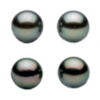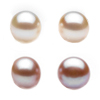- sale
- new items
- lovely beads
- wedding beads
- beads for teens
- for custom order
- newsletter
- recognition
- testimonials
- birthstones
- zodiac signs
- jewelry guide
SHOP BAG
![]() in your bag 0 items
in your bag 0 items
|
A pearl is a hard, rounded object produced by certain animals, primarily mollusks such as pearl oysters. Pearls can be used in jewelry and also crushed in cosmetics or paint formulations. Pearl is valued as a gemstone and is cultivated or harvested for jewelry. Akoya pearls are the smaller saltwater pearls, which traditionally have been associated with Japan but which can be found in many other places in Asia. Biwa pearls are the best known, and probably the best quality as well as the most expensive freshwater pearls, they are cultivated in Lake Biwa in Japan. Due to pollution, the production of authentic Biwa pearls has dropped sharply and many of the so called Biwa pearls you see actually come from many other places. Cultured pearls are not a natural pearl. A tiny irritant like a bead, grain of sand, or a piece of mother of pearl from another mollusk can be inserted into the opening of an oyster or mollusk. It can take five to seven years to secrete enough nacre to cover this irritant to produce a jewelry quality pearl. Freshwater pearls are found growing in mussels living in lakes and streams all over the world including the USA and Europe. These pearls tend to be less expensive than saltwater pearls even in the same size and color. Saltwater pearls are found in oysters in parts of the oceans and other bodies of saltwater around the world. The most well know places are the Philippines, Indonesia, Thailand and Burma in South East Asia. Other well known pearl growing areas are near the Arabian Sea in the Persian Gulf, the Red Sea and near Sri Lanka. Tahiti pearls are the largest pearls, they are found in the South Pacific (Australia and Tahiti). Here you will also find the beautiful black pearls. |


|

